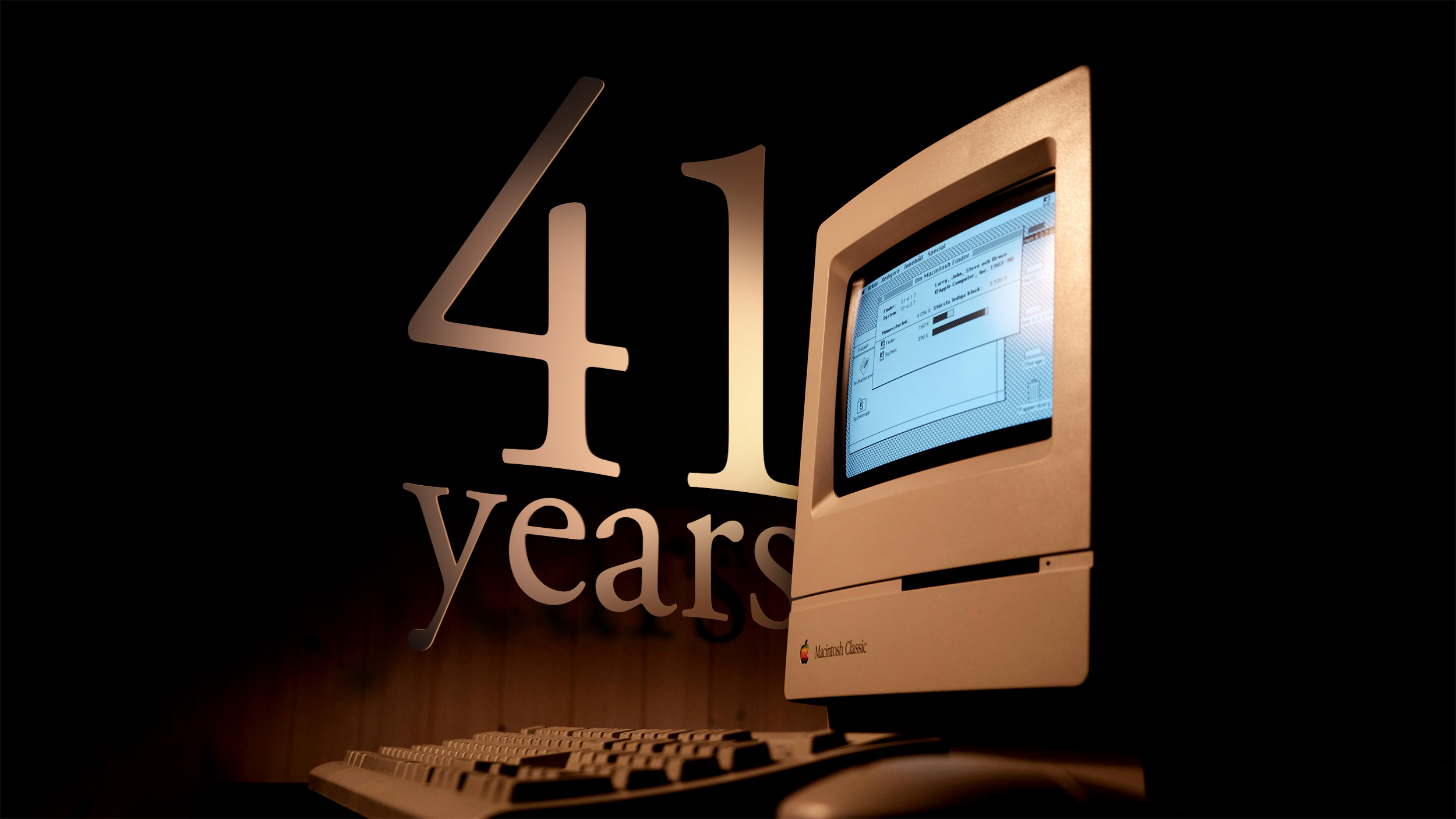Apple announced the Macintosh 41 years ago today, introducing the first widely successful personal computer with a graphical user interface.

The Macintosh revolutionized personal computing by popularizing the use of a mouse to control an on-screen pointer. At the time, this point-and-click navigation method was unfamiliar to most, as personal computers primarily relied on text-based command-line interfaces operated with a keyboard. An excerpt from Apple’s press release in 1984:
Users tell Macintosh what to do simply by moving a “mouse” — a small pointing device — to select among functions listed in menus and represented by pictorial symbols on the screen. Users are no longer forced to memorize the numerous and confusing keyboard commands of conventional computers. The result is radical ease of use and a significant reduction in learning time. In effect, the Macintosh is a desk-top appliance offering users increased utility and creativity with simplicity.
Apple claimed the Macintosh required “only a few hours to learn” and introduced features that are now fundamental, such as a desktop with icons, multitasking in windows, drop-down menus, and copy-and-paste functionality.
Macintosh easily fits on a desk, both in terms of its style of operation and its physical design. It takes up about the same amount of desk space as a piece of paper. With Macintosh, the computer is an aid to spontaneity and originality, not an obstacle. It allows ideas and relationships to be viewed in new ways. Macintosh enhances not just productivity, but also creativity.
The Macintosh was priced starting at $2,495, equivalent to over $7,000 today. It featured an 8 MHz Motorola 68000 processor paired with 128 KB of RAM (upgradeable to 512 KB), a 400 KB 3.5-inch floppy disk drive, a 9-inch black-and-white CRT display with a resolution of 512×342 pixels, and two serial ports to attach peripherals like the Apple ImageWriter printer or external modems.
It included software such as MacPaint, which allowed users to draw detailed black-and-white graphics with features like pattern fills and brushes that were revolutionary for the time, and MacWrite, a WYSIWYG (What You See Is What You Get) word processing application with real-time editing, proportional fonts, and drag-and-drop functionality.
The Macintosh launch was accompanied by one of the most iconic marketing campaigns in history, including the legendary “1984” Super Bowl commercial directed by Ridley Scott. The ad positioned the Macintosh as a revolutionary product that would challenge the conformity of the computing industry, dominated by IBM at the time.
Over 40 years later, the Mac continues to be an essential product for Apple and retains many of the same software features as the original model. Apple’s full press release for the original Macintosh is available on Stanford University’s website.
This article, “Apple’s Macintosh Turns 41 Today” first appeared on MacRumors.com
Discuss this article in our forums